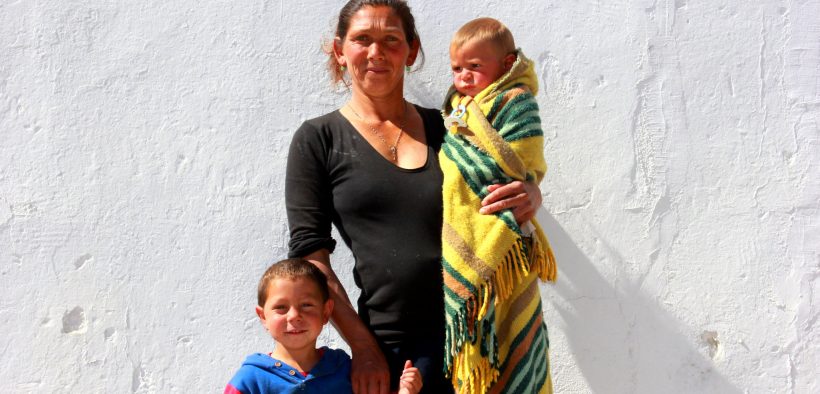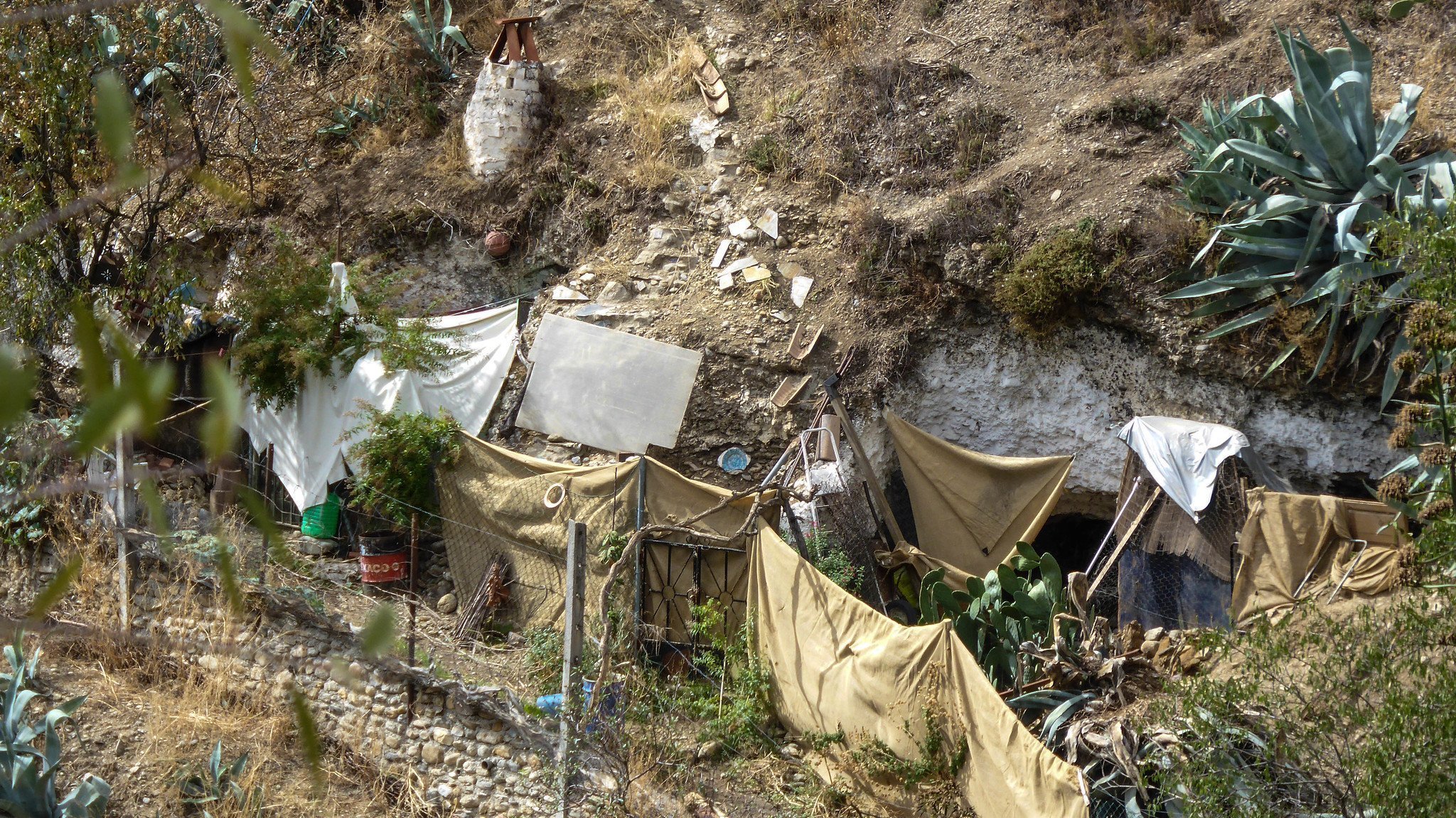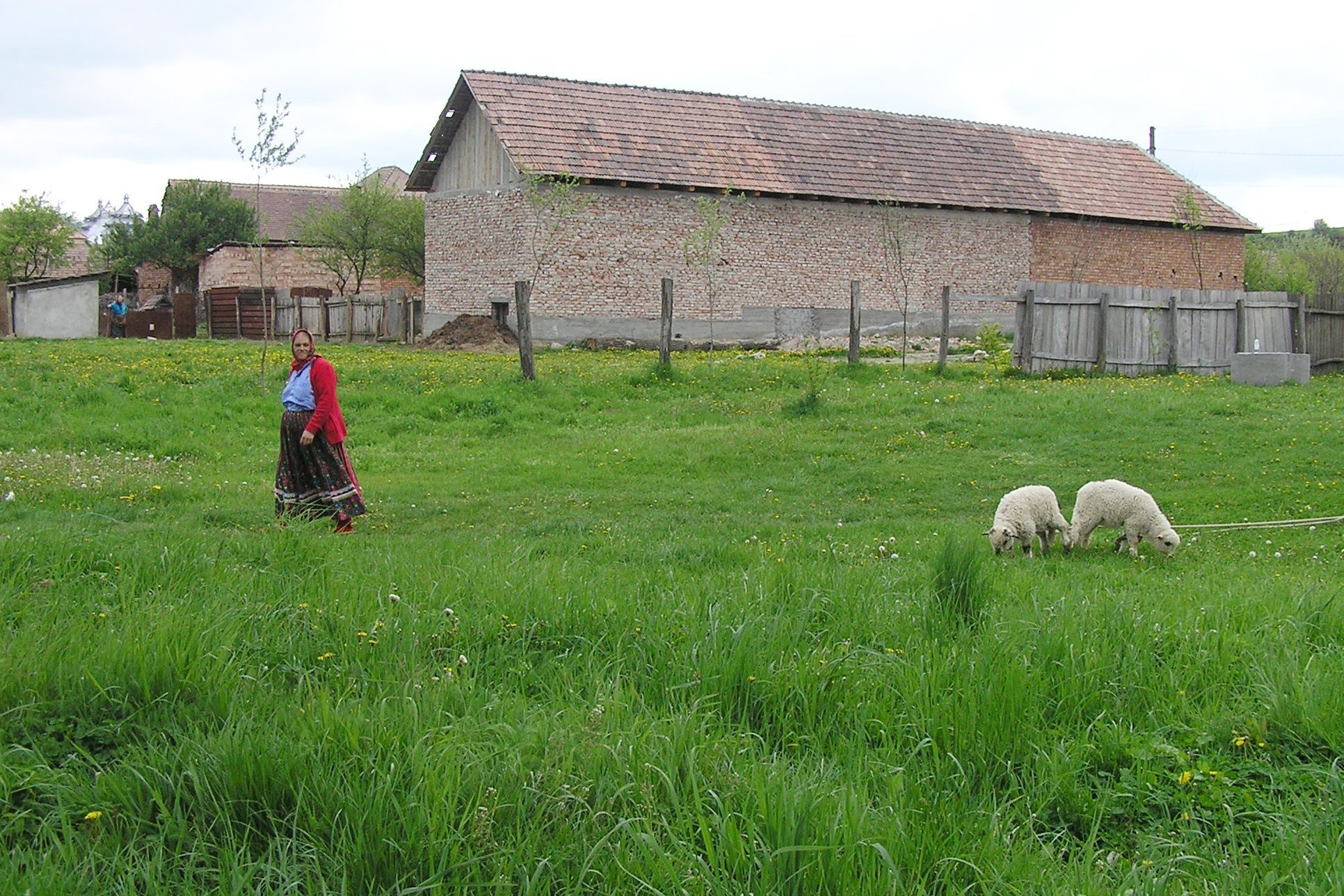Roma Discrimination in Spain and the Racist Legacy of the ‘Great Gypsy Roundup’

This is the third part, in a three-part series on the Roma people in Europe. Roma, who are commonly referred to as “gypsies” though the term is often considered derogatory, face widespread and often state-sanctioned discrimination. Read part one here.
“In my neighborhood, in the central district of Madrid, we have some neighbors who are gypsies and their reality is clearly different than the stereotypes that are spread about them.”
Roma people have a very strong presence in Spain, where they are referred to as “gitanos” by Spanish people, although they call themselves “Calós.” The language of the Calós, also called Caló, is fairly different from the Romani language spoken by most Roma groups in Europe. It mostly uses words from the Romani language with some words borrowed from Spanish and other Romance languages; however, the grammar of the language is closer to that of Spanish than that of Romani.
Although Caló culture has played a massive role in the development of some of the most quintessential aspects of Spanish cultural heritage, the Calós are still reviled and scorned by much of the mainstream Spanish population. Some of Spain’s most famous icons, such as the torero (bullfighter) Joselito and the flamenco guitarist Sabicas, come from Roma backgrounds, yet most gitanos are forced to endure horrific poverty and police persecution.
Many Age-Old Stereotypes Projected on the Roma Community Still Remain

Cave dwellings of the gypsies of the Sacromonte the hill of Valparaíso in Granada, Spain (Photo: JvL, Flickr)
Antonia Alpañes, a schoolteacher from Madrid, explained some of the stereotypes to Citizen Truth that are projected onto the Roma community in Spain, noting the strange dichotomy that exists between negative assumptions and praise of assumed positive characteristics.
According to Alpañes, “many people would say that they’re thieves, or that they don’t like to have regular jobs, that they don’t want to settle down and integrate into mainstream society… On a more positive note, some people would refer to their typical attire and fashions, for example, their every-day clothing or their clothing for special events, which is typically adorned with golden or shiny materials and beautiful jewelry. They are also frequently associated with having a natural gift for performing, mainly flamenco.”
This strange division between allegations of laziness and criminality but also the approval of cultural aspects such as clothing and performing arts mirrors stereotypes that are prevalent in the black community in the United States. Many white Americans associate black Americans with criminality and idleness, while the same white Americans listen to black musical genres such as blues and hip-hop and appropriate fashions made popular by the black community.
Alpañés also adds that anyone who is observant can clearly see that most, if not all, of these stereotypes are unfounded. She said, “In my neighborhood, in the central district of Madrid, we have some neighbors who are gypsies and their reality is clearly different than the stereotypes that are spread about them: they manage businesses and shops and are clearly hard-working members of the community. No one would perceive them as ‘stereotypical gypsies’ which proves that stereotypes do not always match with reality.”
Alpañes explained that another stereotype commonly attributed to Roma culture is that “they are a male-dominated, chauvinistic society.” She said that “this characterization may not necessarily be false but is still an example of prejudice against gypsies because there are many other social groups and cultures that also display these attributes and no one seems to care that much.”
The Gypsy Round-up
The culture of anti-Roma prejudice in Spain has existed there nearly as long as it has in France and Hungary. One of the most tragic events in Spanish history is what is known as “The Great Gypsy Round-up.” This was a massive attack and raid on Roma communities in 1749 organized by King Ferdinand the VI and other members of the Spanish monarchy, such as the Marquis de Ensenada. It was also backed by the full force of law when the Consejo de Estado (State Council), then Spain’s highest court, issued a ruling in favor of the operation.
Previous royal edicts and legal rulings mandated that Roma could only live in certain towns and cities, as a result severely restricting their movement and keeping them under close surveillance while also making it incredibly easy for government forces to locate and detain them.
Isaac Motos, a Roma philosopher, activist and poet, explained to the Virtual Museum of the Gypsy People in Catalonia that “the Great Round-up of 1749 could not have been possible without that compilation of data, or without the new strategy of controlling those belonging to the Roma culture. It would have been absolutely impossible. Such measures enabled the existence in 1749 of a listing of 14,000-20,000 Roma people in 54 Spanish cities with details of exactly where and who they were.”
During the round-up, thousands of Roma men, women and children were captured and separated from each other. Men were sent to mines, ports and shipyards in order to be used for forced labor, where they were subjected to inhumane conditions and food shortages. Women and children were sent to institutions known as “Casas de Misericordia” or Mercy Houses, where they were subjected to psychological and emotional torment in an effort to reform them.
This crusade of terror and degradation against the Roma people continued for decades until the policy was ended by King Carlos III with his so-called “Pragmatic Decree of 1783.” Under the decree, instead of automatically being considered criminals, Roma individuals were now classified as “dangerous individuals.”
Even though the Pragmatic Decree of 1783 is no longer enforced by law, mainstream Spanish society still tends to view Roma as dangerous individuals and treats them as such. Legal strategies are important in the fight to defend human rights and getting rid of racist and unjust laws is a huge part of the battle, but no group can ever achieve true equality without the support and acceptance of the general culture.
History often repeats itself, and in this world of vast government surveillance networks and big data, the threat to marginalized communities is even higher than it was in the past. Further, due to horrific mistreatment at the hands of governments of every political nature, from monarchies to fascist dictatorships to democratic republics, the Roma community often does not place much trust in mainstream political states.
Recent Laws Could Signify a Change
Recent legislation suggests that things might be changing on both a legal and social level for Roma. On January 1st of this year, the Spanish Interior Minister presented the country’s first Hate Crime Action Plan.
When the plan is fully enacted in 2020, crimes that target Roma as a result of their ethnicity and culture will finally be considered hate crimes, along with similar types of violence and abuse. This plan also includes measures that will help law enforcement officers recognize and respond to hate crimes, provide for victim support and offer legal strategies to address hate crimes in Spain. Approximately 427,500 euros have been allocated to provide for the cost of these measures.
Roma Practices Considered Backwards and Chauvinistic by Society
Like other insular communities that have been shunned and persecuted by the outside world and hold on tightly to centuries-old traditions and practices, there are some Roma customs that the non-Roma world would consider backward, sexist and chauvinistic.
Calós have their own legal code, known as “La Ley Gitana.” These laws are not codified in any legal document, but rather are passed down from the elders of the community through the generations. Rulings regarding the law are made by elders in the community who are considered “judges” and have the final say regarding legal matters.
The punishment for a severe violation of the code is not imprisonment, but rather, exile from the community. Tío Rafael, a judge from a community of Calós in Spain, explained to Cuatro.com, “we aren’t like normal judges. We don’t put people in prison, but when someone commits a serious offense, we banish them from where they live.”
Roma Women Often Humiliated to Prove Their Virginity Before Marriage

A Gypsy settlement in Romania with a couple of roadside stands of antiques. (Photo: Marilynn Taylor, 2008)
Roma girls are often forced into arranged marriages where the purity and virginity of the bride is of paramount importance. In order to prove the bride’s virginity, an ajuntadora, someone who specializes in testing to see if the bride is a virgin, attempts to puncture the bride’s hymen with a handkerchief. If the woman is a virgin, the handkerchief is supposed to come back stained with blood, thus asserting her virginity.
Tests attempting to use the existence of an intact hymen as proof of virginal status are not only inhumane and invasive, but also medically flawed and illogical. There are many factors besides penetrative sex that can cause the hymen to become perforated, and further, due to differences in anatomy it is not uncommon for penetrative sex to occur without causing any notable changes to the membrane.
However, in spite of this, Roma women and sometimes even girls are almost always forced to submit to this invasive handkerchief test of their virginity before they can be married, often to a partner who is not of their choosing. This leads many Roma women to obtain a procedure called a “zurcido” before their wedding.
Zurcido can more or less be translated as “sewing” or “mending,” which is essentially what this procedure entails. They perforated hymen is reconstructed using a variety of surgical procedures so that the woman will be able to pass the infamous handkerchief test.
Many Roma women often have no option but to have the procedure performed by inexperienced or incapable doctors, which can lead to immense pain, shame and suffering. Dr. Vilas, a Spanish specialist in zurcidos, explained to Vice, “the work must be carried out by a specialist. I’ve heard of so many cases of people opting for cheap, illegal procedures that lead to horrible infections that sometimes create a layer of fake hymen tissue that is impossible to break by having sex.”
Unfortunately, getting the procedure done by an experienced specialist is not cheap; the cost of a zurcido is often more than two thousand euros. This leads to many Roma women attempting to pass the handkerchief test using cheap, unregulated options that have a high risk of failure and complications.
Homophobia in Roma Communities
Along with some issues related to sexism, there is a large amount of homophobia in traditional Roma communities, and being gay and caló is not easy. Juan David, who identifies as gay and also comes from a caló background, told Cuatro.com that “being gay is not viewed favorably in the calé community. Members of the community, especially the older generations, view homosexuality as a sickness.”
Calé (the adjective form of caló) children who are suspected of having same-sex attraction or are caught engaging in romantic acts with members of the same sex are often severely beaten by their fathers in front of other members of the community or are cast out of the community completely. Many of these attitudes stem from age-old traditions and cultural prejudices, but they are also fueled by many members of the Roma community’s recent conversion to evangelical Protestantism.
The double stigma faced by LGBTQ calós as a result of their traditional culture and the bigotries of conservative Christianity is quite similar to the struggle of LGBTQ black and Latino communities in the Americas, who also must face this two-pronged attack of modern-day religious hate and cultural discrimination.
Despite the centuries of discrimination and challenges Roma people have endured, Roma culture has played a crucial role in the development of music, cuisine and sport on the Iberian Peninsula. Nevertheless, calòs are looked down upon by Spanish society and struggle to integrate into the social and economic mainstream. However, a combination of modern, progressive and inclusive ideas with cultural education might finally heal these scars and deep divisions.











